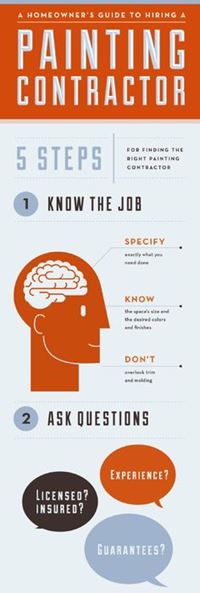Comprehending Seasonal Influences On Commercial Exterior Paint: Necessary Knowledge For Success
Comprehending Seasonal Influences On Commercial Exterior Paint: Necessary Knowledge For Success
Blog Article
Write-Up By-Korsholm Whalen
When you're intending a commercial external paint job, seasonal aspects can make or break your results. You'll want to take into consideration exactly how temperature level and humidity influence paint application and drying out times. Picking color consultant free online courses can guarantee your paint sticks appropriately and lasts longer. However which seasons are truly the very best for this kind of work? Let's check out the key elements that can impact your job's success.
The Influence of Temperature on Paint Application
When you're planning an industrial external paint task, the temperature level can considerably impact how well the paint sticks and dries.
Ideally, you wish to paint when temperatures range between 50 ° F and 85 ° F. If it's also chilly, the paint might not heal effectively, bring about issues like peeling off or breaking.
On the other hand, if it's too hot, the paint can dry too promptly, protecting against proper bond and resulting in an uneven finish.
You ought to likewise consider the time of day; early morning or late afternoon uses cooler temperature levels, which can be a lot more positive.
Constantly examine the maker's suggestions for the certain paint you're utilizing, as they often provide guidance on the suitable temperature level array for ideal outcomes.
Moisture and Its Effect on Drying Times
Temperature isn't the only ecological element that influences your industrial exterior painting job; humidity plays a significant duty too. High humidity levels can decrease drying times drastically, affecting the general high quality of your paint work.
When the air is filled with dampness, the paint takes longer to cure, which can lead to concerns like poor bond and a greater danger of mildew development. If you're painting on an especially moist day, be gotten ready for extensive delay times between layers.
It's critical to keep track of neighborhood weather conditions and plan accordingly. Preferably, aim for humidity degrees between 40% and 70% for ideal drying.
Keeping these consider mind guarantees your task stays on track and provides a long-term coating.
Best Seasons for Commercial Outside Paint Projects
What's the best time of year for your industrial outside painting jobs?
Springtime and early autumn are commonly your best choices. During these seasons, temperature levels are light, and humidity degrees are often lower, creating perfect conditions for paint application and drying out.
Avoid summer season's intense heat, which can create paint to dry as well rapidly, bring about bad attachment and coating. In a similar way, winter's cold temperatures can hinder appropriate drying out and treating, running the risk of the longevity of your paint work.
great post to read for days with temperatures between 50 ° F and 85 ° F for optimal outcomes. Remember to examine the neighborhood weather forecast for rain, as wet problems can wreck your task.
Planning around these variables guarantees your painting task runs efficiently and lasts much longer.
Conclusion
In conclusion, planning your industrial outside paint jobs around seasonal factors to consider can make a considerable distinction in the end result. By organizing job during the ideal temperature levels and humidity levels, you'll ensure far better attachment and drying out times. Bear in mind to watch on regional weather prediction and select the right time of year-- springtime and early fall are your best bets. Taking these steps will aid you achieve a long lasting and specialist finish that lasts.
